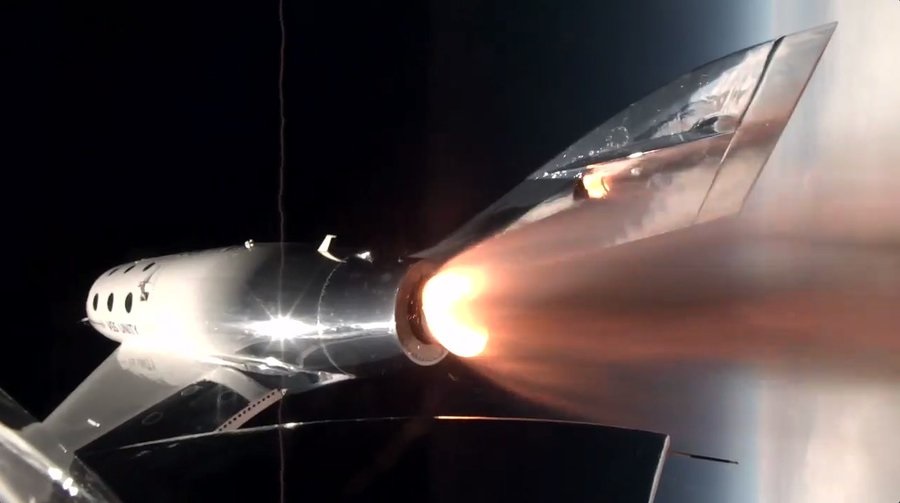On its final voyage, the Virgin Galactic suborbital rocket SpaceShipTwo ‘Unity’ was launched on the Galactic 07 human rocket flight to the edge of space.
The carrier aircraft VMS Eve lifted off from Spaceport America in New Mexico at 1428 GMT on 8 June with Unity underslung from the aircraft. At 1526 GMT, Unity was air-dropped from 44,500 feet at 1526 GMT and, just a few seconds later, fired its hybrid rocket engine. After a powered climb and subsequent ballistic trajectory to an apogee of 87 km, it made its ‘feathered’ re-entry and, having refixed its wing into a glide position, landed on the space port runway at 1541 GMT.

SpaceShipTwo ‘Unity’ makes its final blast off. Courtesy: Virgin Galactic
The humans on Galactic 07 were astronaut Tuva Cihangir Atasever of the Turkish Space Agency who was performing microgravity experiments on behalf of Axiom Space, real estate executive Irving Izchak Pergament, and hotelier Giorgio Manenti. They were joined by SpaceX engineer Andy Sadhwani. The two-pilot crew were Nicola Pecile and Jameel Janjua on his first flight. This was the 12th human mission above the 80 km space boundary of the US Air Force (but below the official Karman 100 km limit of space which Blue Origin New Shepard, Virgin Galactic’s suborbital space tourism competitor, does reach). It was also Virgin Galactic’s seventh paying passenger mission.
The flight was the final one for the six-seat SpaceShipTwo design as the firm is transitioning to the larger eight-seat Delta class suborbital spaceplane.








